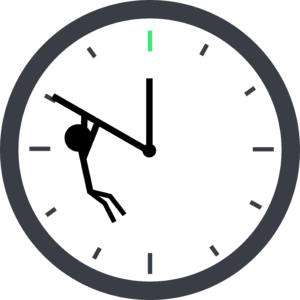
Naps and Active Recovery | Restorative Strategies for Health and Longevity
Rest and recovery are essential pillars of a healthy, balanced lifestyle. While many focus on structured workouts or strict schedules, incorporating naps and active recovery can significantly enhance physical, mental, and emotional wellbeing. These simple yet powerful strategies are key to supporting longevity and preventing burnout.
In this guide, we’ll explore the benefits of naps and active recovery, their impact on health and ageing, and practical tips to integrate them into your daily routine.
The Science of Napping and Recovery
- Napping
A nap is more than just a quick rest; it’s a scientifically supported tool for rejuvenation. Short naps can:
-
- Boost Cognitive Function: A 20–30 minute nap can improve memory, focus, and alertness.
- Enhance Mood: Napping reduces stress and helps regulate emotions, promoting better mental health.
- Restore Energy: A well-timed nap combats fatigue, especially during mid-afternoon energy dips.
- Active Recovery
Active recovery involves low-intensity activities that promote circulation, muscle repair, and relaxation. It’s a vital component of a balanced fitness routine and offers benefits like:
-
- Improved Blood Flow: Gentle movements enhance circulation, aiding muscle recovery and reducing soreness.
- Reduced Inflammation: Active recovery helps clear lactic acid and other byproducts of intense exercise.
- Stress Relief: Activities like yoga or walking provide mental clarity and physical relaxation.
How Naps and Active Recovery Support Longevity
Incorporating rest and recovery into your lifestyle provides numerous benefits that directly impact longevity:
- Reduces Inflammation
-
- Chronic stress and physical exertion can lead to inflammation, a contributor to ageing and disease. Recovery techniques help mitigate these effects.
- Supports Heart Health
-
- Napping has been linked to reduced blood pressure and a lower risk of heart disease.
- Enhances Mental Clarity
-
- Both naps and active recovery improve focus, memory, and emotional regulation, reducing the risk of cognitive decline.
- Prevents Burnout
-
- Regular recovery prevents physical and mental exhaustion, ensuring long-term productivity and vitality.
Practical Tips for Effective Napping
Napping isn’t about “sleeping the day away”; it’s about targeted, restorative rest. Here’s how to nap effectively:
- Keep It Short
-
- Aim for 20–30 minutes to avoid entering deep sleep, which can leave you feeling groggy.
- Nap Mid-Afternoon
-
- The ideal time is between 1 p.m. and 3 p.m., when energy naturally dips.
- Create a Comfortable Environment
-
- Find a quiet, dark space, and use an eye mask or white noise if needed.
- Don’t Nap Too Late
-
- Avoid napping close to bedtime, as it can disrupt your nightly sleep cycle.
Active Recovery Techniques
Active recovery doesn’t require a gym or specialised equipment. Here are some simple techniques to try:
- Stretching
-
- Improves flexibility, reduces muscle tension, and enhances circulation.
- Yoga
-
- Combines gentle movement with mindfulness, promoting both physical and mental relaxation.
- Walking
-
- A leisurely walk boosts circulation and clears the mind, making it a great recovery option.
- Swimming
-
- Gentle swimming engages muscles without strain, providing a low-impact way to stay active.
- Light Resistance Work
-
- Use resistance bands or bodyweight exercises at a low intensity to maintain mobility and strength.
Debunking Myths About Naps and Recovery
Despite their benefits, naps and recovery are often misunderstood. Let’s address some common myths:
- Myth: Naps Are Only for Children
Adults can benefit immensely from well-timed, short naps, especially during stressful or tiring periods. - Myth: Recovery Means Doing Nothing
Active recovery is far more beneficial than complete inactivity, promoting circulation and reducing stiffness. - Myth: Recovery Days Are for the Weak
Recovery is essential for building strength, preventing injuries, and maintaining overall health.
Practical Tips for Staying Consistent
- Schedule Recovery: Treat naps and active recovery as essential parts of your routine, not optional extras.
- Listen to Your Body: Pay attention to signs of fatigue or soreness and adjust your activities accordingly.
- Celebrate Small Wins: Recognise the energy and focus you gain from rest and recovery.
Your Path to Rest and Longevity Starts Here
Incorporating naps and active recovery into your lifestyle is a simple yet effective way to support your health and longevity. These restorative strategies not only enhance physical recovery but also boost mental clarity and emotional balance, helping you live a longer, healthier life.
At Slowing the Clock, we’re here to guide you with evidence-based tips and tools for optimising recovery and achieving your health goals. Explore our website for more insights into sleep, fitness, and personalised strategies for longevity.